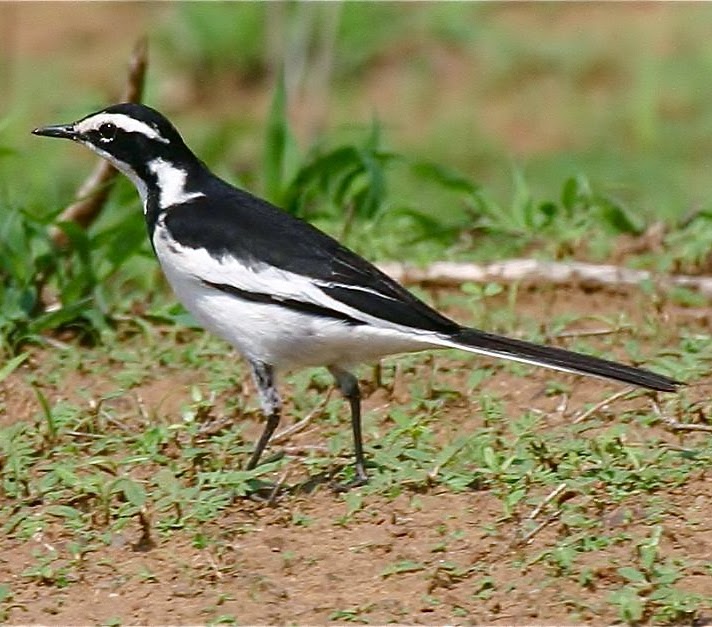 |
| Photo by Ken Havard (Internet Bird Collection) |
Common name:
African pied wagtail (en); alvéola-preta-e-branca (pt); bergeronnette pie (fr); lavandera africana (es); witwenstelze (de)
Taxonomy:
Order Passeriformes
Family Motacillidae
Range:
This species is found throughout most of sub-Saharan Africa, from Guinea to Ethiopia and south to South Africa, as well as along the Nile valley north to southern Egypt. They are mainly absent from southern Angola, Namibia, Botswana and western South Africa.
Size:
These birds are 19-20,5 cm long and weigh 22-33 g.
Habitat:
The African pied wagtail is mostly found along rivers and other water bodies with sandy banks or scattered boulders, but it may also occupy rocky coastlines. They also use man-made habitats, such as ponds, parks, playing fields, golf courses, suburban gardens and sewage works. They are present from sea level up to an altitude of 3.000 m.
Diet:
They feed on various insects, such as flies, beetles, grasshoppers, dragonflies, larval and adult butterflies, ants and termites, as well as small crabs, worms, tadpoles, small fishes and human food scraps.
Breeding:
African pied wagtails are monogamous, solitary nesters. They breed in August-April and the nest is built by both sexes, consisting of a deep cup made of dry grass, weeds, roots, stems, leaves, downy seeds, flood debris, string and other coarse materials, and lined with rootlets, fine grass, hair and feathers. It is typically placed close to water on the ground or in vegetation, such as reeds, grass and flood debris, or in man-made sites such as outbuildings, holes in walls, building ledges, bridges, roofs and even boats. the female lays 2-5 eggs which are incubated by both sexes for 12-15 days. The chicks are fed by both parents and fledge 15-18 days after hatching, but only become fully independent about 2 weeks later.
Conservation:
IUCN status – LC (Least Concern)
This species has an extremely large breeding range and is described as common in much of this range, although common to uncommon in West Africa. The population is suspected to be stable in the absence of evidence for any declines or substantial threats.







